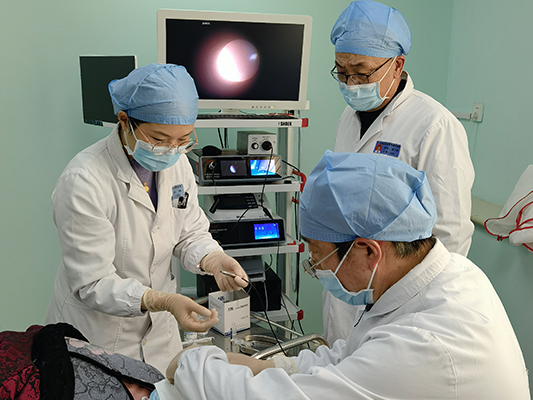- Shanghai, China
- [email protected]
- +86-21-58189111
Advantage
1. Under normal circumstances, it is a non-invasive examination operation;
2. It can be checked under direct vision, which can be used as the basis for clinical diagnosis, so that the surgical indications for breast disease patients with nipple discharge without palpable mass can be clarified, and those who only suffer from ductal dilatation and other symptoms. The patient is exempted from surgery; at the same time, it provides a reliable basis for the early diagnosis of breast cancer;
3. It provides three-dimensional surgical positioning, clarifies the location and scope of the operation, improves the accuracy and success rate of the operation, and reduces the scope of the operation. For example, the distance of the intraductal cancer lesion from the nipple can be correctly determined;
4. With the aid of the mammary duct instrument channel, some surgical and inspection instruments can directly enter the mammary duct cavity. For example, the cytological brush can be used to brush the cells of the lesion (the cell samples are no longer obtained by sucking the cavity fluid) for cytological examination. Use instruments (such as baskets) to extract a single benign spiny tumor and complete some local operations;
5. With the development of clinical medicine, ductoscopy will create favorable conditions for the application of laser technology to directly remove tumors in the ducts.

Check meaning
abnormal result
1. All kinds of nipple discharge, especially in patients with bloody nipple discharge and yellow discharge, the incidence of neoplastic lesions in the milk duct is about 1/3 to 1/2, and there are also many cases of patients with white discharge It is caused by a tumor in the milk duct, and surgery is required after ductoscopy;
2. Tumors in the areola area accompanied by nipple discharge. Most of the tumors in this area are intraductal tumors or fibroadenomas, which are closely related to the milk ducts. The diseased milk ducts can be identified by ductoscopy, thus guiding the accurate surgical removal. Tumors and diseased milk ducts, reducing the chance of local recurrence after surgery;
3. In patients with plasma cell mastitis around the areola, plasma cell mastitis is due to the proximal plug of the milk duct, accumulation of milk duct secretions, exfoliated cells, and inflammatory cells, resulting in acute and chronic inflammation of the breast. The ductoscope can lavage and collect the exfoliated cells in the milk duct, and perform cytological examination to confirm the diagnosis; at the same time, it can also flush and unblock the diseased milk duct to achieve the purpose of drainage. Defining the diseased milk duct, surgical removal of the diseased milk duct and local scar tissue;
4. Mastalgia is a type of breast hyperplasia, which is partly caused by the blockage of the proximal milk duct, which makes the distal milk duct unsmooth and twisted. It is helpful to confirm the diagnosis and achieve a certain therapeutic effect;
5. For patients with breast cyst, clearing the milk duct can improve the symptoms.
in short
1. Identify the cause of nipple discharge
2. Refine the surgical indications and reduce unnecessary operations
3. Reduce the scope of surgery and accurately remove the lesions
4. Exploratory treatment for some special types of diseases
5. Carry out some minimally invasive treatment and minimally invasive surgery with the help of ductoscope
Leave a Comments